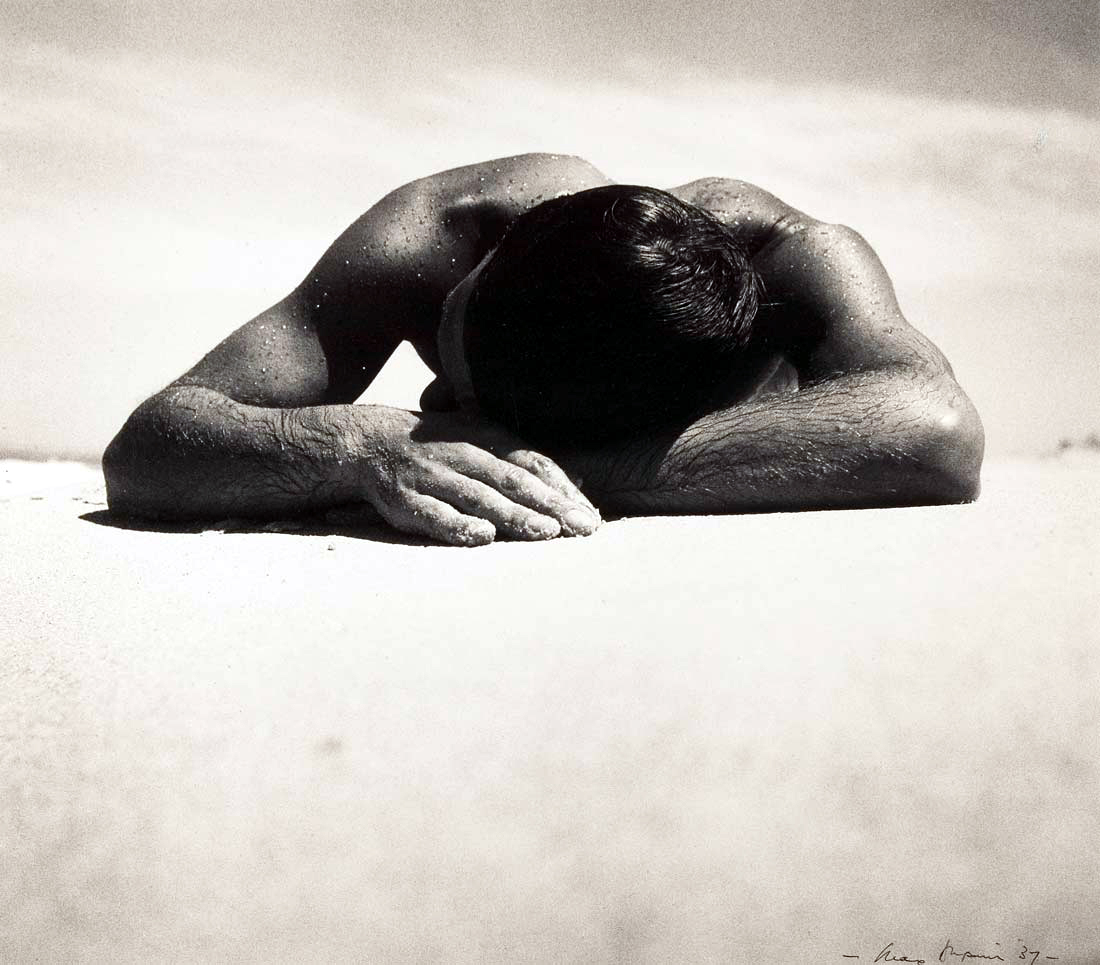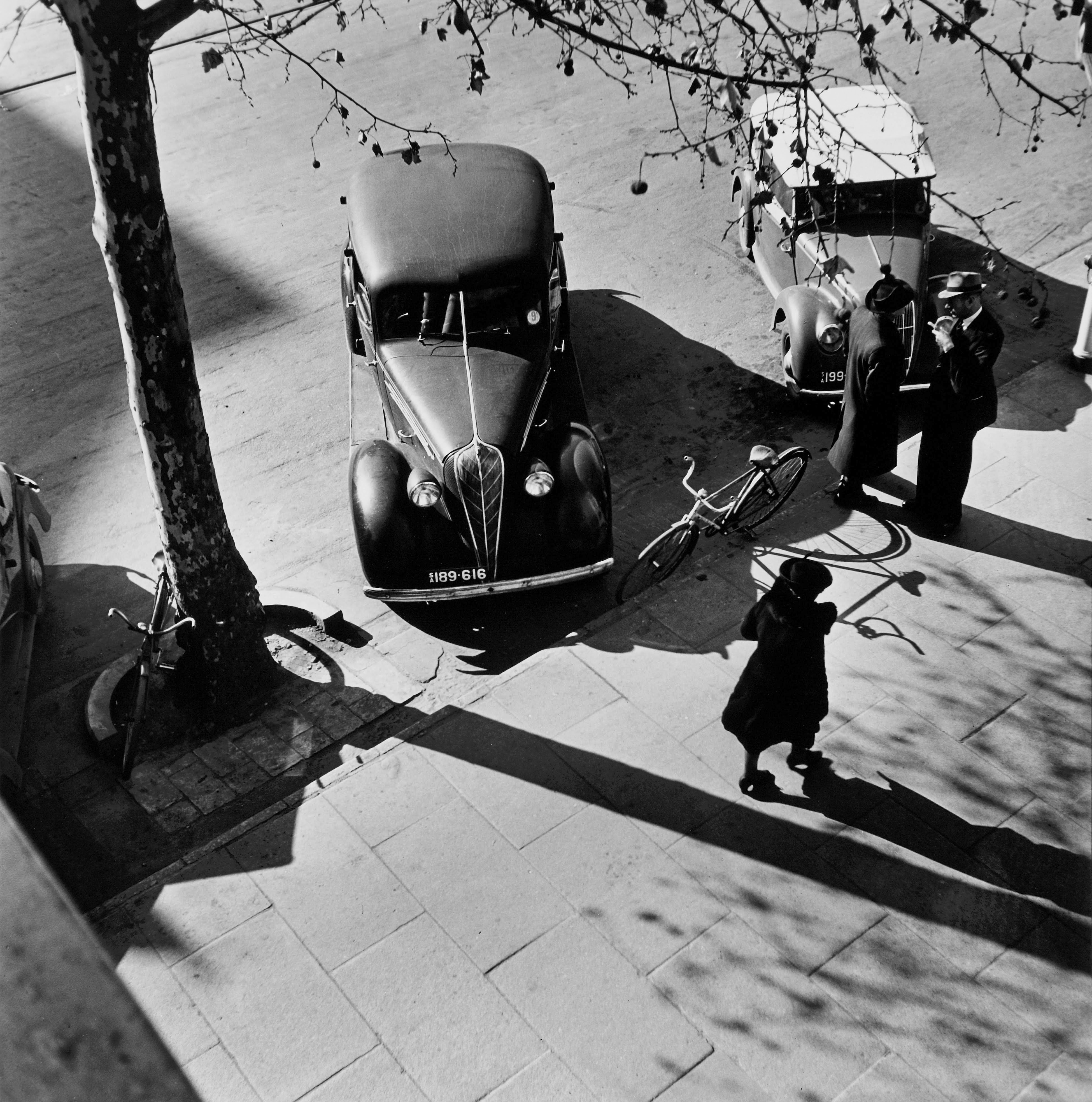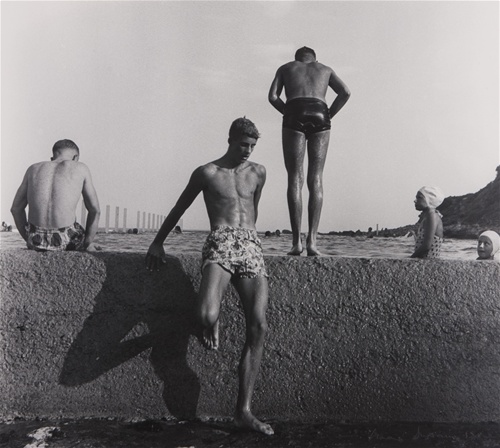MAXWELL SPENCER DUPAIN

DOB - 22nd April 1911
DOD – 27th July 1992
Maxwell Spencer Dupain was born in Sydney, where his father operated a modern gymnasium in the 1920s. He became interested in photography around the age of fourteen. On leaving Sydney Grammar School in 1930 he began a three-year apprenticeship in Cecil Bostock’s studio. In 1934 Dupain established his own studio in Bond Street. In 1947 he moved to a new studio in Castlereagh Street in partnership with Hartland and Hyde process engravers. Over thirty years later, the partnership still continues to operate, from a studio in Artarmon.
Dupain joined the Photographic Society of New South Wales in 1928 and began exhibiting around 1930. His early work was in the pictorial style but in 1933 Dupain began to photograph industrial forms such as silos in a way totally alien to the pictorialists. The new images stressed geometric form and were outlined and accentuated by clear hard light rather than romanticized by atmospheric effects. He was influenced by the New Photography or New Objectivity movement in photography which developed first in Germany between 1927 and 1933. Like many of his generation, Dupain rejected the romantic preoccupation with picturesque subjects and turned to developing a style in tune with contemporary life in the machine age.
During the 1930s Dupain pioneered modern photography in Australia. His photographs explored and exposed the formal structure of the world around him - showing the recumbent figure of a sunbaker as a monumental triangle in plate 78, or the abstract shape of a silo against the sky in plate 64, with equal strength and drama. His nude studies stressed the skeletal form beneath the flesh as in plate 67 or 68 where montage printing is used to show the parallel in shape between the torso and the shell spiral.
Dupain, like Cazneaux, found a patron in the publisher Sydney Ure Smith who regularly used his commercial and personal photographs in The Home magazine and presented a portfolio of work in the Art in Australia journal in 1935.
By 1938 Dupain had a reputation as a leading commercial photographer in fashion, advertising and portrait work. He was exhibiting regularly in photographic salons and many of the pictures of these years show Dupain‘s admiration for the work of modern European photographers such as Man Ray and Lázló Moholy-Nagy and for surrealism. In 1938 Dupain instigated the Contemporary Camera Groupe, partly in protest at the continued dominance of pictorialism, which was by then a reactionary style which paid scant attention to the new world or modern photography.
Between 1943 and 1944 Dupain was on war service as a photographer in the camouflage unit and spent time in New Guinea, before transferring to the Department of Information in 1945 to undertake an assignment to photograph Australia for promotional purposes. Dupain was influenced by the documentary movement in film, which had a considerable impact on still photographers in the late 1940s. His friend Damien Parer, a war photographer and film maker, had introduced Dupain to the ideas of the documentary movement and its concern with factual, informative yet penetrating observation of the real world. Dupain was already involved with making images which revealed the forms in the environment and decided to concentrate on industrial and architectural work when he returned to his studio in 1947.
Dupain’s studio had been kept going during his absence by his first wife Olive Cotton, from whom he had separated in 1941. Dupain ceased working in fashion and advertising, which seemed superficial subjects after the war years.
During the 1950s, Dupain developed his approach to photographing industrial and architectural form. As well he continued to work in portraiture and landscape both professionally and personally. In 1954 he was part of the “Six Photographers” group which asserted the value of direct treatment of the world with a personal interpretation in the face of the prevalence of slick advertising and fashion photography of the time.
From the 1960s Dupain continued to develop his professional and personal work. His architectural work became more abstract as he sought to distill the essence of the forms which he began exploring in the early 1930s. Dupain has held several retrospective exhibitions since 1975 when his first major one-man show was held at the Australian Centre for Photography. A monograph on his work is to be published in 1980 and he was made an Affiliate of the Royal Australian Institute of Architects for his contribution to architectural photography the same year.
above text based on Gael Newton's Silver & Grey - Angus and Roberston, Australia 1980
More information MAXWELL DUPAIN
15th November 1935 Page 40 - ART IN AUSTRALIA
MAX DUPAIN
Max Dupain, whose work is reproduced below, is a young photographer who was born in 1911 at Ashfield, Sydney. When he left the Sydney Grammar School in 1930 he began an apprenticeship with C.W. Bostock, the well-known Sydney photographer, and he also attended the Sydney Art School under Mr. Julian Ashton.
He believes in effort and production, and he thinks that with years of experiment the photograph will completely assert itself.
Men like Anton Bruheui, Hoyningen-Huene, Man Ray, Steichen are the creative photographers of the 20th century.
Max Dupain thinks photography in Australia is in much need of a leader who has a potent influence, with a capacity similar to that of Steiglitz or D.O. Hill. We must believe in photography, he says, as a new medium, with its mechanistic and not naturalistic forms. G.H. Saxon Mills, writing in Modern Photography, 1931, says: "It is part and parcel of the terrific and thrilling panorama opening out before us to-day of clean concrete buildings and steel radio masts and the wings of the air liner. But its beauty is only for those who themselves are aware of the 'Zeitgeist' — who belong consciously and proudly to their age and have not their eyes forever fixed wistfully on the past".
Friday 31st July 1992 Page 4 - The Canberra Times (ACT)
DUPAIN, PHOTOGRAPHER, DIES
SYDNEY: Max Dupain, whose photos became icons of the Australian way of life, has died aged 81.
His death three days ago was kept secret by friends and he was buried on Wednesday at a quiet ceremony in Sydney, NSW Art Gallery director Edmund Capon said. Mr Capon described him as the father of modern photography in Australia and a man of great initiative and drive.
The Sunbaker, his image of a young man's water-sprayed head resting on crossed arms in the sand, is etched into Australia's visual memory. The black and white photo was taken in 1937, but remains a current image, appearing most recently on the cover of journalist John Pilger's book The Secret Country.
Dupain had been ill for some time and had stopped working a few months ago.
Dupain was part of the new generation of modern photographers who rejected the romanticism of the pictorialist movement that dominated amateur photography in the 1930s and 1940s. He was more interested in industrial landscapes.
He exhibited in the Photographic Society of New South Wales exhibition of 1928, as a 17-year-old schoolboy, and joined a Sydney studio as an apprentice two years later. By the early 1930s his more abstract style was drawing criticism as "unpicturesque".
He set up his own studio in Bond Street, Sydney, in 1934, publishing soon after a series of photos from inner-city Pyrmont that focused on telegraph poles and car wheels rather than human elements.
Dupain joined the 1930s vogue for surrealism.
In 1938 he and 11 other artists formed the Contemporary Camera Groupe and held an exhibition in December of that year. Dupain showed surrealist portraits and nudes.
During World War II, Dupain served with the camouflage unit in New Guinea, transferring to the Department of Information in 1945 — a position that allowed him to develop his ideas about photo-documentary.

SUNBAKER 1937

ADELAIDE STREET SCENE by DUPAIN 1946

AT NEWPORT